By Carol Garcia
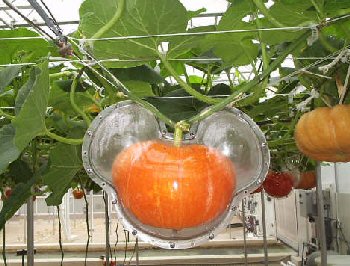
“Would you like to book a tour today?” That was the question posed by the Cast Member on the phone helping me sort out the details of our upcoming trip. “Sure, I would,” I thought, but I have three children under the age of 10, so doing most tours is out of the question right now. Disney usually reserves their tours for those guests 16 years and older.
As if she read my mind, the Cast Member offered the Behind the Seeds Tour. This is a one hour tour and is open to guests of all ages. The tour kicks off at the Land Pavilion in Epcot, right next to the entrance to Soarin’. As it is in Epcot, park admission is required and not included in the price, which is $12 for adults (10+) and $10 for children (3-9). I thought the price wasn’t too bad for a new experience and two of my children were school aged and beginning science, so I could see an hour of behind the scenes, um, seeds, as holding their interest, so we were booked.
The day of the tour, we arrived a few minutes before our scheduled time (it is run several times through the day), and checked in. We were given name tags and waited for the group to assemble. Once we were ready, we met our guide, who was not only a Disney Cast Member, but also an entomologist. I never thought of Disney as employing many scientists, but this tour was about to change my mind.
The first part of the tour involved, bugs. The good kind anyway. We were treated to a short video explaining how Disney uses various bugs to manage pests on the food they grow. That eliminates the need to use chemical pesticides on the plants. The size of these helpful bugs was so small as to not seem scary to the more squeamish in the group, although we were able to see them magnified. The casual gardener may even learn a thing or two about keeping those tomato plants at home free from pests.
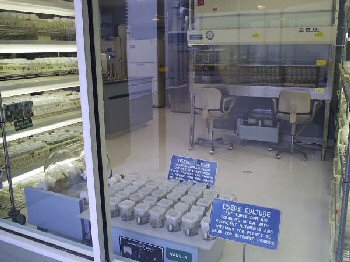
A look at a lab doing work on plant tissue cultures.
From there, we entered the actual green houses attached to the Land Pavilion. These are the same ones you see on the Living with the Land ride, but we were able to walk through them and really take in what Disney is doing.
Hydroponics is an important part of the studies they are doing in The Land. Hydroponics basically is growing plants without soil. The plants are fed with a nutrient solution (think vitamin water). Sometimes the roots are open to the air, sometimes they are in another medium (a sort of foam that replaces the dirt).
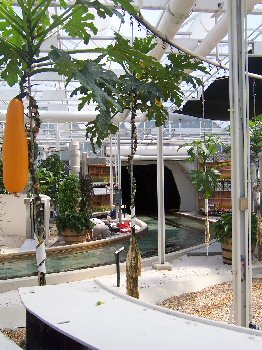
The plants are hung from the top and the roots, open to the air, are passed through the nutrient solution.
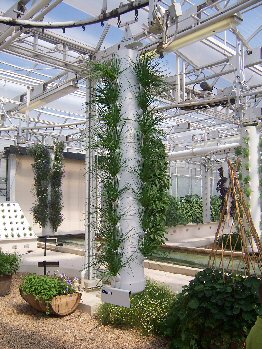
Here, chives are grown in a medium other than soil.
Although the purpose of the greenhouses is educational, some of the food grown there is actually served at the Garden Grill restaurant in The Land. Nothing is more famous than the Mickey shaped cucumbers and pumpkins. To create this effect, the cucumber or pumpkin in simply placed in a mold when it is small and grows into that shape, in this case, Mickey’s head. Although the Mickey shapes aren’t available commercially, a quick search on the internet will reveal that similar molds are available to the public in different shapes. We were even able to sample the cucumber, just to make sure it still tastes the same in Mickey form (it does!).
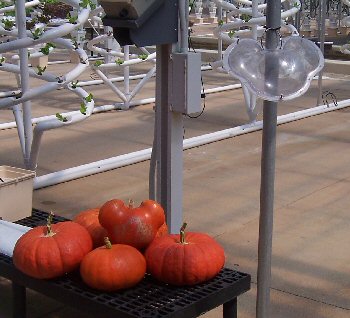
A Mickey shaped mold is displayed, along with various pumpkins, both regular and Mickey shaped.
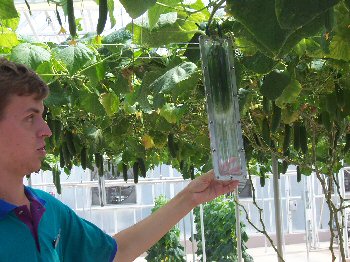
Our guide explains how the cucumbers grow in the Mickey shaped mold.
Another field of study is size. There are amazing varieties of plants that produce with super-sized vegetables or amazing quantities of vegetables. These are not the varieties found in your local garden center. There is even a tomato plant that yields thousands of tomatoes at one time from a single vine. A previous vine produced a world record harvest — more than 20,000 tomatoes with a total weight of more than 850 pounds of tomatoes that were harvested and served in restaurants at Walt Disney World Resort. Those guests who have attended Mickey’s Not So Scary Halloween party will see some of the giant Cinderella pumpkins grown in The Land decorating the Magic Kingdom.
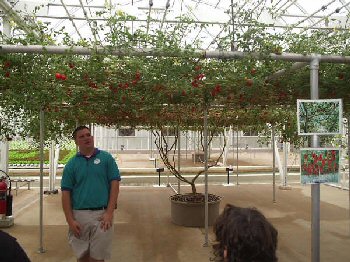
A single tomato plant produces many tomatoes. This is the only known plant of its kind outside of China.
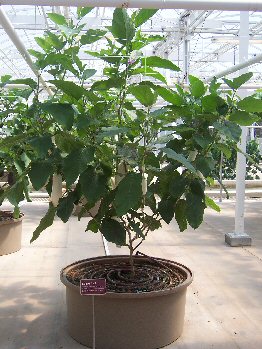
A giant eggplant produces a white colored fruit, rather than the purple usually found in the US.
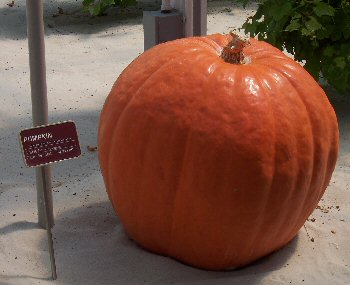
A giant pumpkin took only two months to get to this size.
Next up on our Tour are the animals. There are baby American Alligators on display. At that size (and distance) they look quite cute! There are also tanks of fish. We were even able to feed some of them, which was quite fun. There were ten people who threw pellets into the tank at the same time. Talk about a feeding frenzy! The kids could have stayed there and done that over and over again.
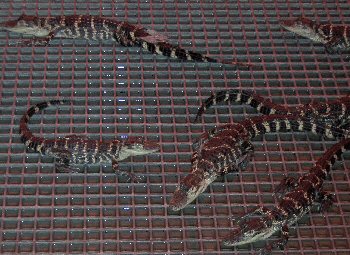
American Alligators
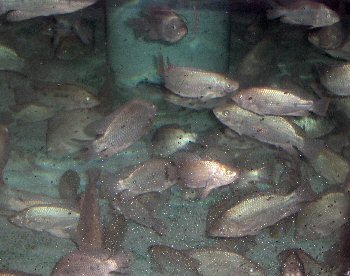
A feeding frenzy as we feed the fish.
The final stop of the tour was a room with tropical plants in it. My son was thrilled to see a banana tree bearing his favorite fruit up close. My two little chocoholics proudly posed with a cocoa bean, their favorite.
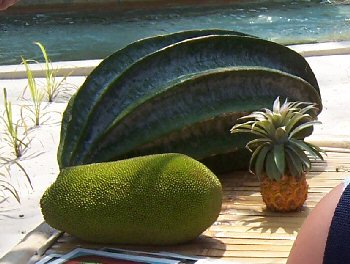
Some tropical products on display.
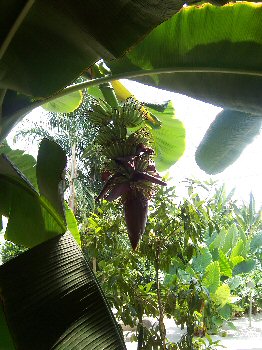
Bananas growing overhead.
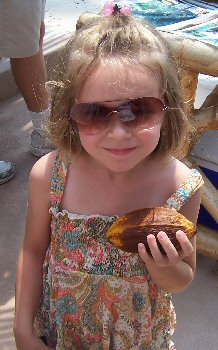
Posing with her favorite “food.”
Our tour ended here, with plenty of time to ask questions on our way back to the starting point. This was a great diversion to our usual park time. The kids learned something (gasp!) without even realizing that they were having a science lesson. Mom and Dad liked it too. And for the gardener at home, there were several things learned that could be applied in a real life situation. We even received some hand outs that discussed some of the topics from the tour. That was well worth the expense and time we spent Behind the Seeds.
Magically Speaking Featured Article
Library of Congress ISSN:1556-3863
